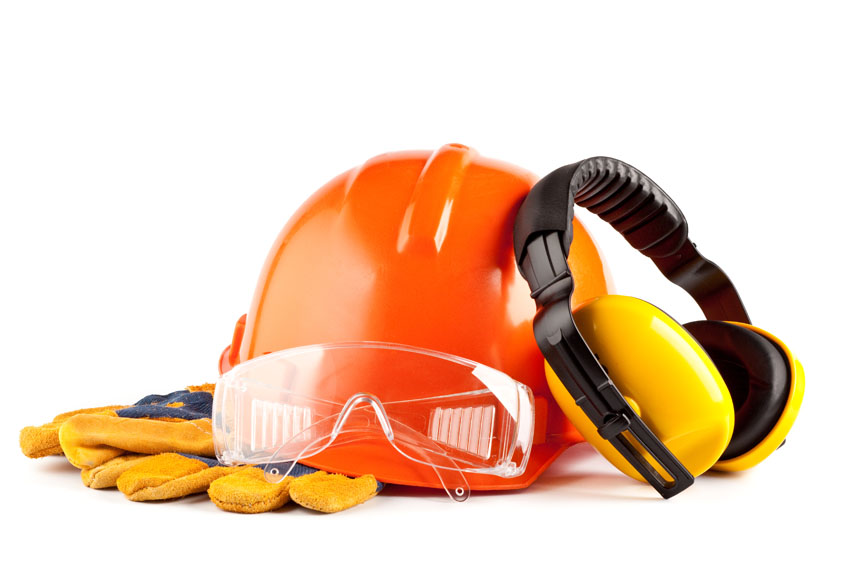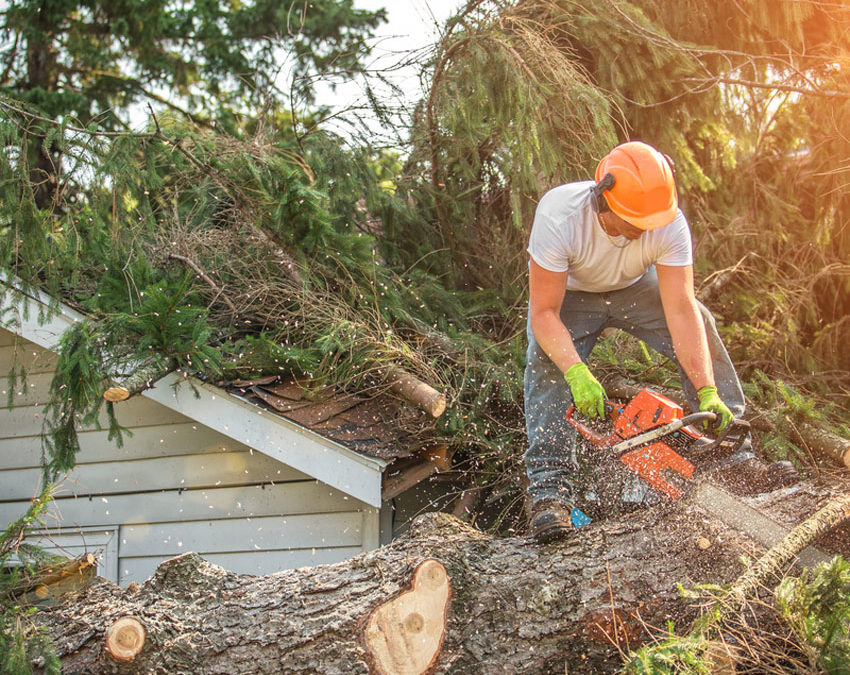According to the Centers for Disease Control (CDC), there are about 36,000 injuries caused by chainsaws every year. Approximately 40 percent of all chainsaw accidents occur to the legs and well over 35 percent occur to the left hand and wrist. The average chainsaw injury requires 110 stitches and medical costs for chainsaw injuries amount to at least $350 million per year. The two leading causes for chainsaw injuries are lack of training and experience with using a chainsaw, and not wearing the proper PPE (Personal Protective Equipment.)
Risk of these injuries can be reduced by practicing proper chainsaw safety and operation, and wearing the appropriate personal protective equipment (PPE). As your insurance agent, we strongly urge you to read and follow the following safety prevention tips to keep you, friends, and family safe this summer.
Before You Start the Chainsaw
Proper chainsaw operation starts before even turning on the saw. Inspect the area for anything that might put your safety at risk. Some examples include:
- Anything above the work site that could dislodge into the work site
- An escape route in case you need to reach safety quickly
- Debris (rocks, large branches, tree stumps, or nails)
- Electric power lines
If you notice electric power lines near the worksite, you should always remain at least ten feet away from them. If you can’t, then you should contact the utility company to de-energize the lines.
It is important to ensure that all chainsaw parts are in good working condition before attempting to power on the saw. Chainsaws should have the following parts: chain catcher, anti-vibration handle system, chain brake, hand guard, muffler, fuel container, and throttle. If you find a chainsaw is damaged or that any of these parts are missing, do NOT use the chainsaw until it can be repaired. Fuel and oil levels should also be checked before starting the chainsaw. Refueling should take place at least ten feet away from any open flame or other source of ignition.
Starting the Chainsaw
Never drop start a chainsaw by holding the starting cord with one hand and pushing the saw down with the other. Instead, place the saw on the ground with the chain brake engaged and pull the start cord toward you.

Orange hard hat, earphones, goggles and gloves on a white background
Proper Chainsaw Personal Protection Equipment
The following PPE should be used during chainsaw operation:
- Safety glasses with side shields, safety goggles, and face shields
- Leather gloves with ballistic nylon reinforcement on the back
- Heavy, well-fitted, safety work boots
- Hard hat, highly visible in color
- Hearing protection
- Trousers or chaps with sewn-in ballistic nylon pads. Trousers (pants) that protect to the belt line offer more protection than those that stop at the upper thigh. Close fitting clothing without cuffs, made of close-woven fabrics.
- Fall protection
Safety and Operation Techniques
In order to reduce the risk of injury, always practice proper chainsaw safety and operation techniques. These include:
- Making sure the fall area is free of debris or hazards
- Avoiding cutting an object so that it falls into nearby objects – This can cause both objects to fall in unexpected and possibly dangerous ways.
- Keeping the tip guard in place
- Gripping the handle with both hands
- Avoiding, whenever possible, cutting an object under tension
- Being aware of kick-back
Additionally, all other bystanders should remain at least 150 feet from anyone cutting down a tree and at least 30 feet from anyone removing limbs from a tree.
To avoid losing balance while using a chainsaw or losing control of the saw, never use a saw in a way that causes you to be off-center, such as reaching out too far or standing on an uneven surface. To maintain control of the chainsaw, all cuts should be below the waist and the chainsaw should never be raised above head level. If you are carrying the chainsaw more than 50 feet or through difficult terrain such as slippery surfaces or thick underbrush, engage the chain brake or shut off the chainsaw.
Watch these chainsaw safety and operating tips from Remington Power Tools.
Even with proper training, operating a chainsaw is inherently dangerous. Never attempt to do jobs beyond your abilities. High-risk chainsaw operations include operating a chainsaw above ground level, such as in a tree or on a ladder, working on a steep slope or uneven ground, cutting trees known to split, working in inclement weather, such as heavy rain or extreme cold, and working for long periods of time with no breaks.
Chainsaw safety is a priority for every homeowner. You may not want to spend the extra few minutes checking the function of the saw and inspecting the worksite. However, doing so can help prevent risks, including those related to injury to you or your family.
We proudly insure the residents of North Carolina, and are your local independent insurance agent. We can provide coverage from many insurance carriers so you receive the insurance for your budget and needs! You can reach us at (252) 637-4173 or online at https://www.ticnc.com/quote-request/.
Source: https://safetyskills.com/chainsaw-safety-operation/ and https://www.ccohs.ca/oshanswers/safety_haz/chainsaws/ppe.html and https://incident-prevention.com/ip-articles/the-risks-and-rules-of-chainsaw-operation

